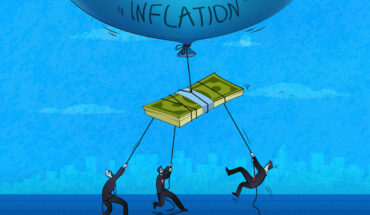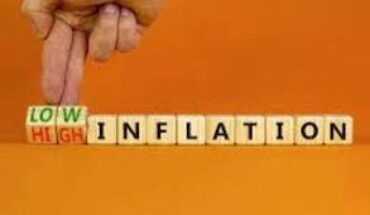
Diwali lights up every nook with its bright splendour, a source of enormous joy for the Indian economy, similar to the celebration that surrounds us. The economy is receiving newfound strength from the revival of consumer confidence among Indians. It’s noteworthy that the Reserve Bank of India continues to make efforts to understand various emotions of Indian consumers on different dimensions. In this context, a new report from the RBI is currently being widely discussed these days, which could be officially announced or interpreted as an indication that the economic impact of COVID-19 on Indian society has reached the brink of complete resolution. The figures presented in this report are based on a survey conducted in the month of September. This report confirms that now every ordinary Indian is thinking the same way for their present and future as they did in the year 2019 or before. The statistics in this report reaffirm that the Consumer Confidence Index or the CCI recorded 92.2 in the month of September, slightly above the level it was in the year 2019. These facts also validate that Indian economic policies are moving in the right direction.
This survey conducted by the Reserve Bank of India primarily aims to understand the thoughts and sentiments of Indians on five key economic aspects. It analyzes the economic conditions, current level of employment, inflation and its impact, changes in personal economic income, and various types of expenditures. The other aspect of this survey is that it attempts to understand the perspective of Indians towards economic progress in the future, along with the analysis of the present situation. This survey for the month of September is also presenting that the Consumer Confidence Index (CCI) will reach a level of 122.3 for the upcoming year 2024, which is approximately the same as it was in the year 2019. After the economic setback caused by the COVID-19 pandemic, the CCI had declined to around 40 points from the year 2020 to 2022. The main reasons behind this decline were the significantly negative annual GDP growth in the year 2020-21 and a prolonged period of economic dip in all sources of income, along with uncertainties affecting society. It is noteworthy that the world’s most populous country has emerged from the economic downturn within just three years.
Despite all this, it has now become extremely necessary to think deeply about the fact that the thinking of a common man in the Indian society does not seem to be very positive towards the present and future regarding the increase in employment. Under the same survey of the Reserve Bank of India, more than two-thirds of the people have accepted that the situation regarding the availability of employment at present is the same as a year ago and about more than 10 percent of the people didn’t express their opinions about employment. In this report, about 30 percent people refused to give their opinion regarding the increase in employment for the next year. More than 25 percent people believed that after one year there will be a decline in the level of employment in the Indian economy and society. Only 18% of people believe that the situation a year from now will remain the same as the current state, where the increase in employment opportunities in mainstream India is not very hopeful. Analysing the underlying reasons, two aspects come into play: there is a scarcity of jobs in the public sector, while the private sector consistently exhibits higher instability.
What is the ultimate solution to unemployment? This question reflects deep contemplation considering that in the past three decades, the unemployment rate in India has never fallen below 5%, even as the country’s population has increased by around 500 million during this period. In other words, the number of unemployed individuals in India is increasing rapidly each year. Therefore, India is recognized as a country with “jobless economic growth”. This poses a significant question about India’s economic identity, apart from the fact that our GDP number is consistently growing. If economic policies focus on the rapid development of the manufacturing sector, a robust solution to the problem of unemployment can emerge. The manufacturing sector is the most significant means of providing employment in the economy. Through this, the poverty line in society can also be eradicated because it leads to the equitable distribution of economic wealth among various sections of society, resulting in an increase in individual incomes. Since at present the service sector in India is holding the reins of economic progress and the employment created by it is not reaching all sections of the society, that is why India remains a poor nation. In the labour-intensive manufacturing industry, India’s global contribution is only 2.5%, whereas China’s share is 32%. Consequently, large industries and factories are not prevalent in Indian cities. Moreover, India’s manufacturing sector contributes less than 2% to its exports, whereas Vietnam, with just 7% of India’s population, surpasses India significantly in export contribution. Another challenge is that India not only faces competition from China in the Asian continent’s manufacturing sector but also from several small economies like Thailand, Indonesia, Malaysia, Taiwan, the Philippines, Korea, and neighbouring Bangladesh, which have effectively controlled costs and carved out a significant space in the global market. It has been observed that the raw material costs in these countries are approximately 20 to 30 percent lower than Indian products. Consequently, Indian materials are not being sold well globally. Therefore, India’s contribution to global manufacturing sector is very low. So, what should be done to elevate our manufacturing sector to new heights? One viable option, seen as a policy issue, is to focus on India’s research and development (R&D) sector. According to statistics, economic investment in research and development in India is still less than 1%, whereas in developed countries, it ranges from 5% to 7%. India continually misses the opportunity to take a significant step forward in the development arena. This certainly deprives India of taking a big initiative on the development front in the future, hence if India wants to increase the contribution of its manufacturing sector, it will have to pay more attention to this.
Dr P S Vohra is Writer, columnist and financial thinker, View are personal





